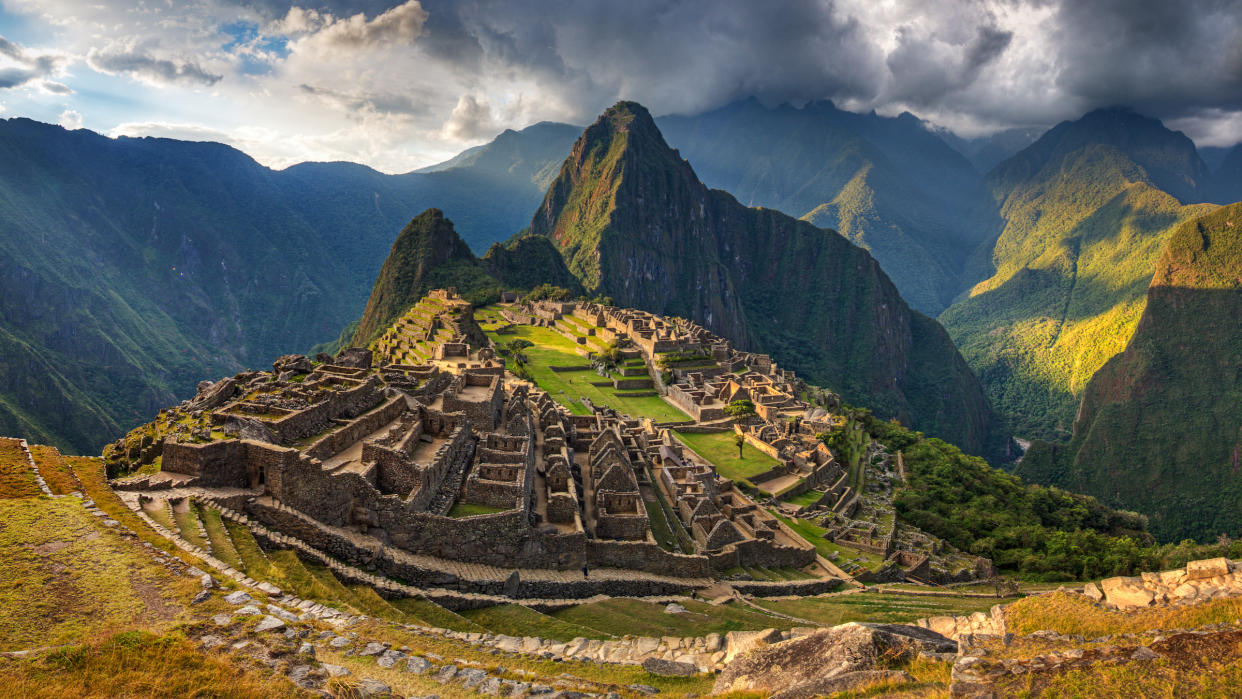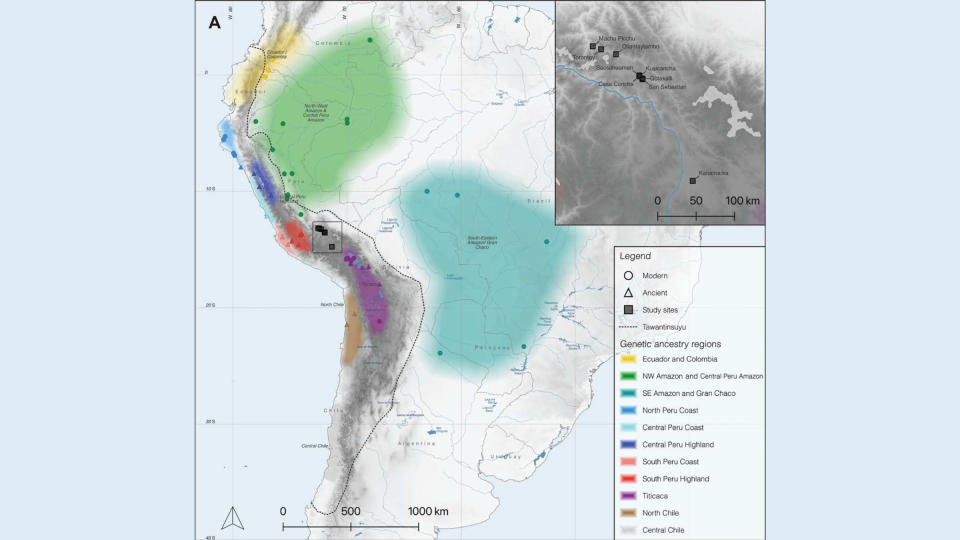Machu Picchu's servants hailed from distant lands conquered by the Incas, genetic study finds

Men and women who served Incan royalty at Machu Picchu weren't locals; they came from distant lands conquered by the empire, a new study finds.
An international team of researchers analyzed the ancient DNA of more than 30 people buried at Machu Picchu who were likely servants attending the Incan elite, and compared the genetic data with the DNA from other ancient human remains and modern people from the region.
The results revealed that the servants hailed from throughout the Andean highlands, as well as from all along the coast of Peru, according to the study, published Wednesday (July 26) in the journal Science Advances.
Who lived at Machu Picchu?
The Incas ruled over the Andean region of South America from the early 15th century to the mid-16th century, when the Spanish toppled the empire. More than a century before the Spanish invasion, the Incas built a massive palace high in the mountains of southern Peru, likely for Incan emperor Pachacuti, who reigned from 1438 to 1471. But little is known about the origins and lives of the servants who ran the Machu Picchu estate.
Roughly 750 people lived at Machu Picchu — including the emperor, other members of Incan royalty, guests and permanent servants — during the peak season between May and October, according to the study. Many royals were served by men known as "yanacona," who were not Incan. Rather, they were often taken from conquered lands and presented as gifts to the emperor. Women known as "aclla" were also removed from their homelands and given as wives to these male servants. Together, the yanacona and aclla ministered to the needs of the emperor and his guests as they engaged in feasting, singing, dancing and hunting and carried out important religious ceremonies.
Related: Machu Picchu was built decades earlier than thought
Over the past century of archaeological work at Machu Picchu, researchers have discovered the graves of nearly 200 people who died between the years 1420 and 1532. Given the simple and non-Incan-style ceramics buried with the individuals, it has long been assumed that these burial caves held the remains of the yanacona and aclla servants who attended the royal family. Previous research using biochemical analysis additionally suggested a high level of ethnic diversity among the Machu Picchu burial population.

To further test the hypothesis that the people buried at Machu Picchu were servants who were brought there from different parts of South America, the researchers analyzed the ancient DNA data of 34 people found in the four cemeteries at Machu Picchu, as well as the DNA of 36 modern and ancient people from the Urubamba Valley, also called the Sacred Valley, north of the Incan capital of Cusco.
The results revealed that "Machu Picchu was substantially more genetically diverse [...] than contemporary rural villages in the Andes," according to their study, led by Lucy Salazar, an archaeologist at Yale University.
Additionally, the team found a significant difference between the genetic ancestries of the male and female servants: Most male individuals came from the highland regions, while the female individuals had much more diverse, non-highland ancestries.
In testing the skeletons for biological relatedness, the researchers found only one pair of first-degree relatives: a mother and daughter buried close to each other. The mother appears to have come from the Amazonian lowlands, while the daughter grew up in the highland or coastal Andes. The lack of additional biological relationships suggests that servants arrived at Machu Picchu as individuals rather than as communities or extended families, the researchers concluded.
RELATED STORIES
—1st intact evidence of Incas' underwater ritual offerings found in a lake in the Andes
—The Incas mastered the grisly practice of drilling holes in people's skulls
—Incan idol that allegedly escaped conquistadors' destruction is real, new analysis shows
Ken-ichi Shinoda, an anthropologist and the director of the National Museum of Nature and Science of Japan who was not involved in the study, told Live Science in an email that "considering that Machu Picchu was a significant city at the time, it is not surprising that people from various Andean regions gathered here." Shinoda and his team previously analyzed DNA from skeletons in non-elite burial sites around Machu Picchu and found much less genetic diversity.
The skeletons in the new study, which were excavated and brought to Yale University in 1912, were the subject of repatriation claims until they were all returned to Peru in 2012. Previously, "I couldn't analyze them," Shinoda said. "Now that it has become possible, I'm delighted that new discoveries have been made."
While the new analyses reveal information about the origins and lives of the servants who ran Machu Picchu, questions about the lives of the royalty remain.
"Despite the inherent limitations," the researchers wrote, "our analyses of the nonelite individuals demonstrate that genomic information, in combination with archaeological and ethnohistorical sources, can reveal a more nuanced and comprehensive view of daily life at Machu Picchu than has been available in the past."

